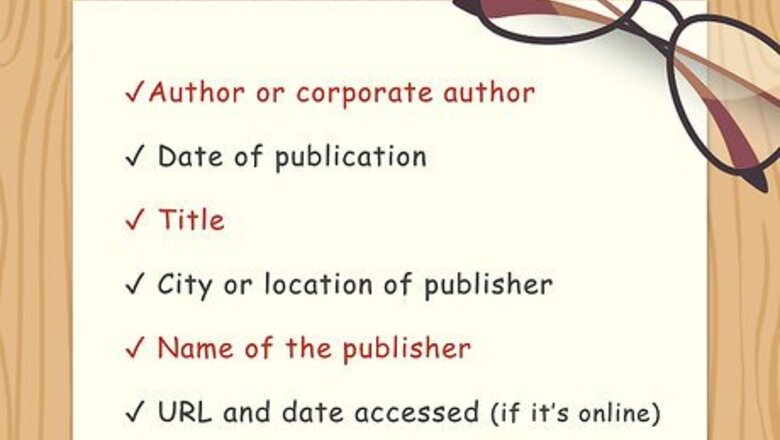
views
Creating an Entry in Your Reference List
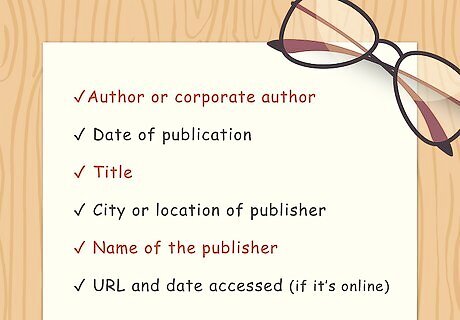
Gather the necessary information. If you don't have the brochure handy while you're writing, make sure that you've kept track of all of the important information you'll need for your citation. For a proper APA citation, you'll need: Author or corporate author Date of publication Title City or location of publisher Name of the publisher Entire URL and date accessed, if an online brochure
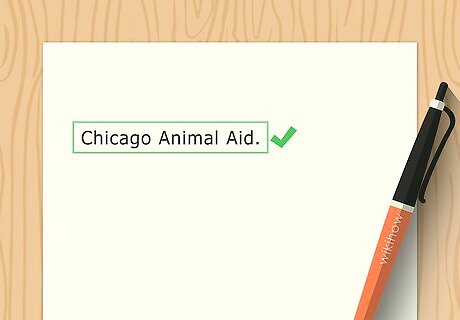
List the author's name or corporate name. Locate the author's name. It might be after the title of the brochure or at the end. Often, instead of an individual's name, you will simply see the name of the organization that published the brochure. This is known as the “corporate author.” Start your citation with the name, e.g., Chicago Animal Aid. A period goes after the author's name. If you cannot locate the author's name or the corporate author, you can use a shortened version of the title, e.g. Animal Aid.
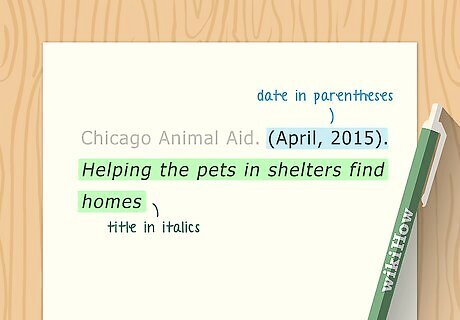
Type the date in parentheses and the title in italics. You'll need both the month and the year of publication. Both will go in parentheses and look like this: (April, 2015). Follow the date with a period after the closing parentheses. Next comes the full title of the brochure in italics. Together, it will look like this, with the author's name first: Chicago Animal Aid. (April, 2015). Helping the pets in shelters find homes. If no date is given, write (n.d.). That is the abbreviation for “no date.”
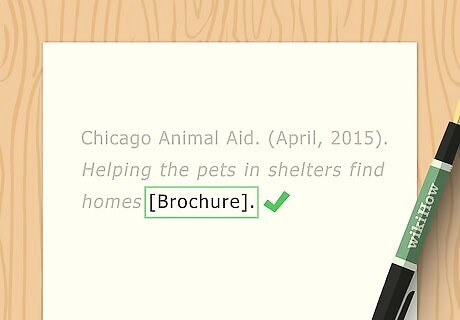
Use brackets to identify the publication as a Brochure. APA style requires that you place the word “brochure" in brackets. It goes after the title of the article, within the period. So far, your citation will look like this: Chicago Animal Aid. (April, 2015). Helping the pets in shelters find homes [Brochure].
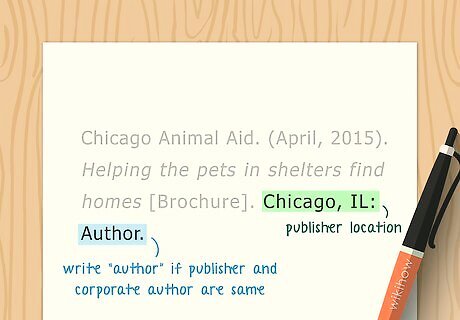
Write the location of the publisher and follow that with the name of the publisher. The name of the location where the brochure was published will be in this format: "Chicago, IL:" If the publisher and corporate author are the same, you will follow that information with the word "Author". Your citations should follow this format: Chicago Animal Aid. (April, 2015). Helping the pets in shelters find homes [Brochure]. Chicago, IL: Author.
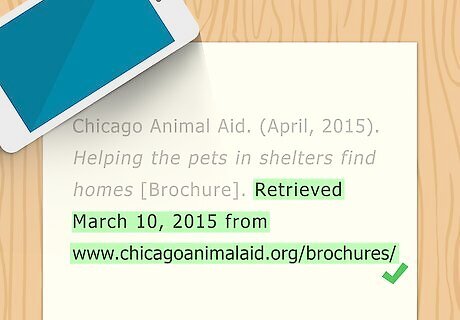
Add additional information if it is an online brochure. Since you found the brochure online, leave out the location of the publisher. Instead, you will need the entire URL for the website where you found the brochure. At the end of the citation, add that information in this format: Chicago Animal Aid. (April, 2015). Helping the pets in shelters find homes [Brochure]. Retrieved from www.chicagoanimalaid.org/brochures/
Using In-Text Citations
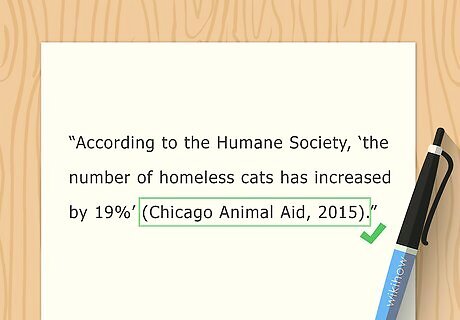
Write the author's name followed by a comma, followed by a date to cite direct quotes. The author's name and date will be in parentheses. Your in-text citation will serve as a brief version as the full citation in your reference list. You will cite direct quotes like this: "According to the Humane Society, 'the number of homeless cats has increased by 19%' (Chicago Animal Aid, 2015)."
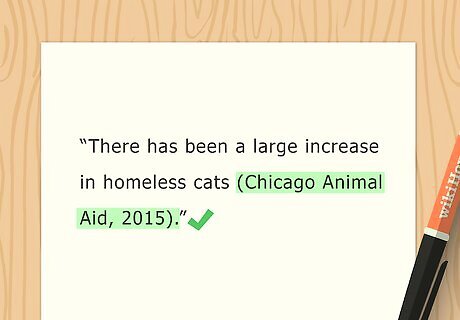
Type the author's name followed by a comma, followed by the date to cite a paraphrase. Again, this information will be inside a parentheses. You will follow the same format to cite a paraphrase or specific idea. Remember, cite everything that is not either your own original idea or general knowledge. You might cite a paraphrase like this: "There has been a large increase in homeless cats (Chicago Animal Aid, 2015)."
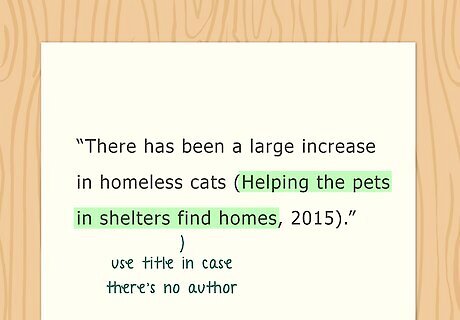
Use a title and date in-text citation if you cannot identify the author. There might be some instances where you can not even identify a corporate author. In that case, you can use a simple title-date format. Your citation will look like this: (Helping the pets in shelters find homes, 2015).
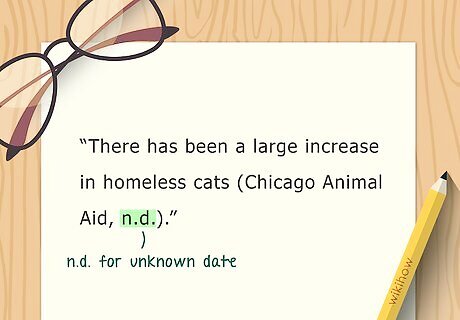
Use an abbreviation if you cannot find a date. Type the initials "n.d.". This stands for "no date". You can simply use this instead of a date. For example, (Chicago Animal Aid, n.d.).













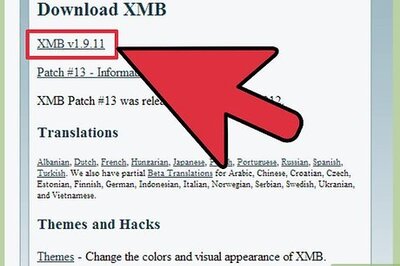




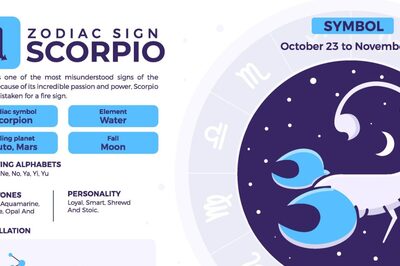

Comments
0 comment